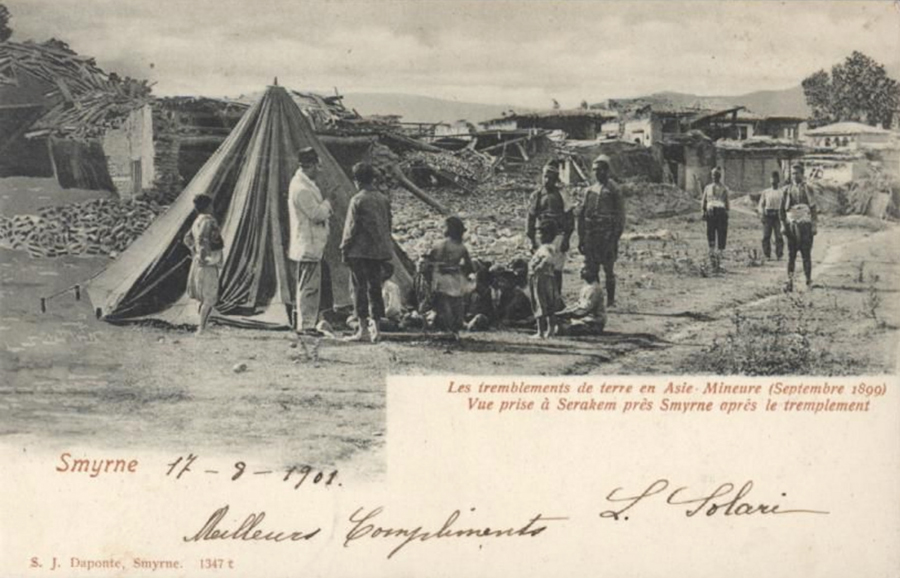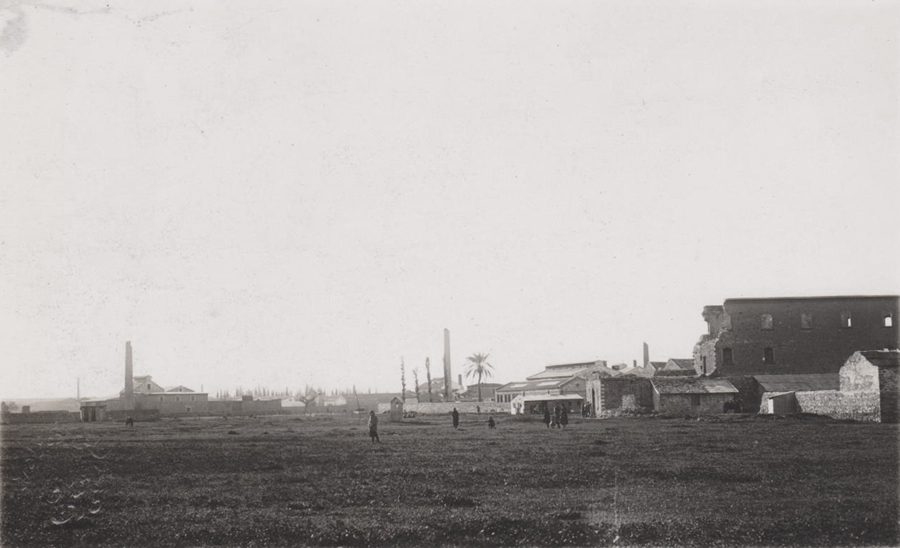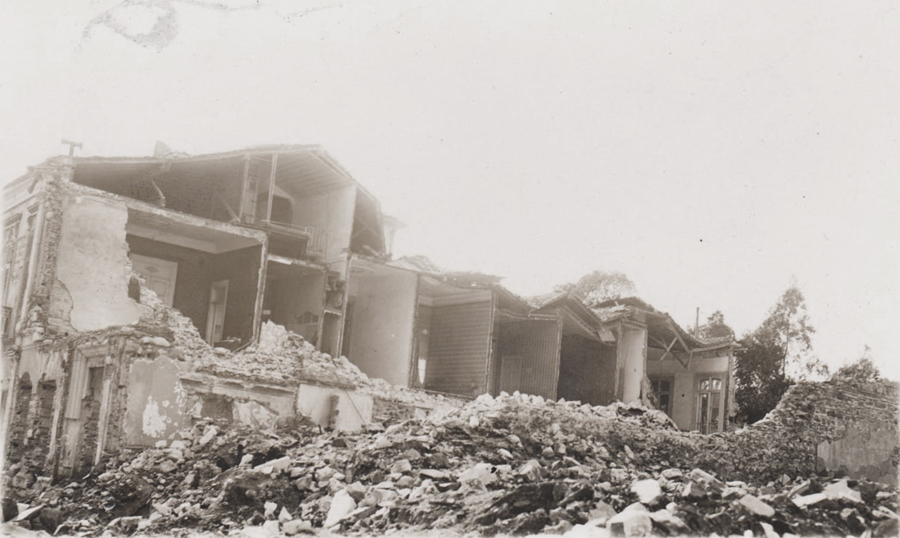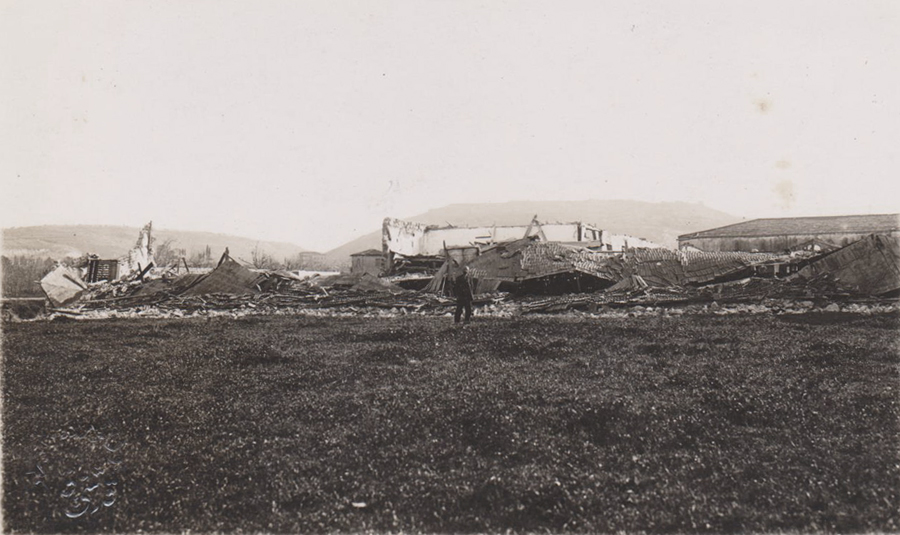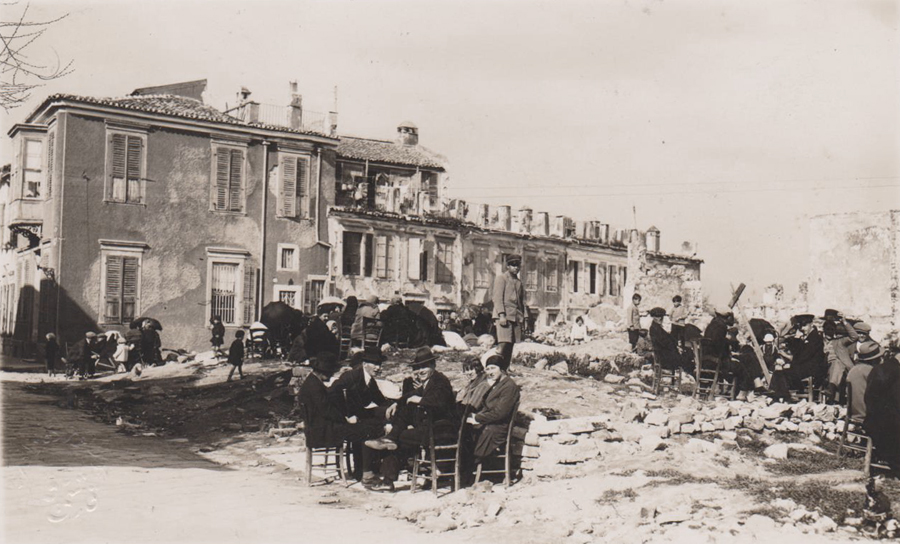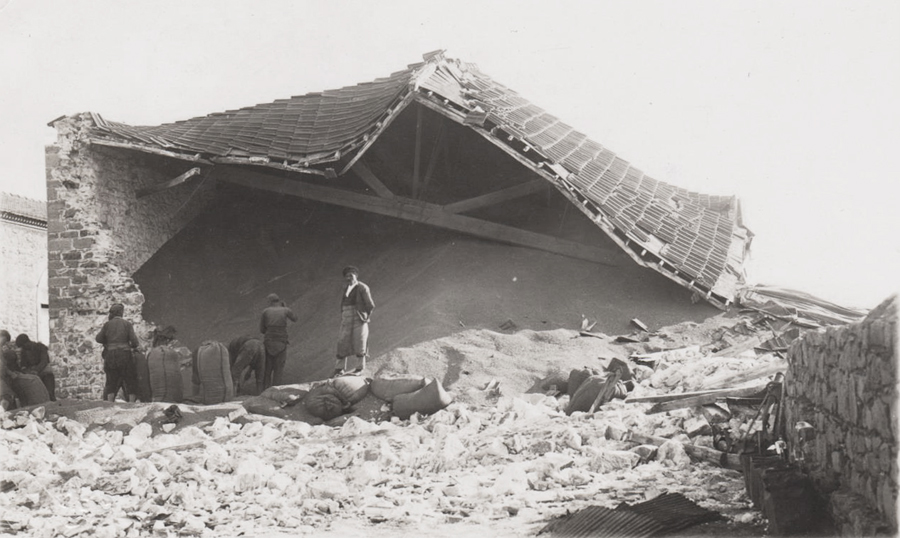Earthquakes were another of the challenges foreign visitors and Levantine settlers had to content with in the Levant, in addition to other threats such as disease and banditry. Clearly the trade opportunities outweighed these risks to make these moves to the East worth their while. There are very few references of Levantines being killed or even injured by these quite regular earthquakes and the probable explanation is that being generally more prosperous than the general native population, they lived in houses that withstood these shocks better.
Caption: Smyrna March 26 1928. Vue of damaged chimneys.
The factory in the distance on the left is possibly the former gas-works and on the right the waterworks.
Caption: Smyrna March 26 1928. Damaged houses.
Caption: Smyrna March 26 1928. Ruined factory, belong to us but not working.
Caption: Smyrna March 26 1928. People sitting out waiting for next shock. (Location is Alsancak (zone not affected by the 1922 fire) should be near the SS Rosario Church).
Caption: Smyrna March 26 1928. Damaged grain store.
These images all dated 26 March 1928 [this is an error as the earthquake happened on 31st March] from the Izmir and its industrial zone (Mersinli etc.) are of a set annotated in English, probably a local Levantine who had business interests as many of the photos depict the damage to industrial buildings, perhaps some of which he had a stake in.
Recollections of an eye-witness from a later earthquake (felt in Izmir on 18 March 1953 centered at Yenice near Canakkale):
Seismos: Earthquake [Smyrneika Lexicon]. We used to have plenty, and on a yearly basis. The aftershocks went on for several days sometimes. From a tender age we learnt not to run, to seek shelter under a table, or a door lintel, and as soon as the first shock is over to go and stand in the middle of the street keeping an eye for falling masonry.
We classified earthquakes in two types: those that have a lateral movement, and those that seemed to come vertically from below. Each was perceived as having a different sound. Pets and animals seemed to tense up several seconds even minutes before the event. Another sign was that the sky would turn into an unusual grey and the air become rather heavy.
Living on top of a major fault line earthquakes were to be expected. And by the time I reached 6 or 7 we’d had a few, and quite a few nights huddling under the dining room table. But one day, I think it was the Easter school recess, I was ill in bed with high temperature, probably the flu. The rest of the family were downstairs. I felt a jolt a loud thud, and saw the ceiling light swinging almost touching the ceiling. Wardrobe doors flung open, and each piece of furniture generating each their own creaking. Framed pictures of Royal Princesses Elizabeth and Margaret were swinging right and left, adding a sinister look to the proceeding. (I remember those portraits, and in actual fact both the then princesses looked charming and beautiful!)
In my childish mind this was the end: I jumped out of bed and probably flew down the two flights of stairs landing into my mother’s lap. They tried to calm me down, giving me some water. But almost immediately we all discovered that I had lost my speech. My tongue moved but the vocal cords were just not operating.
My distraught parents convened the good Dr. Ali Kursad, and for good measure also my paternal grandmother Eleni. Dr Ali was of the opinion that the “false tongue tie” was due to shock and would cure itself after a few days.
Grand’ma Eleni said she knew a “Ghitia”; an old woman’s cure, (in effect these cures worked on the autosuggestion basis the ‘patient’ cure themselves as they believe the Ghitia will cure them). She asked for a gold thread: “Blira” (also in our Lexicon), a spoon of honey, and a glass of water. She said a few prayers in Greek, she banished the evil spirits, signed me in Greek and then ran the gold thread (these were quite common as used in embroideries) through the spoon of honey, and asked me to swallow the thread, keeping hold of one end. She then gently pulled the thread out, gave me water to drink and asked what colour was her dress. Without thinking I said ‘black’.
I had thus regained the power of speech! When Dr Ali came by to enquire how I was doing, he acknowledged that these “remèdes de grand-mère” were often the quickest cure. Dr Kursad was of Turkish-Cretan descent and graduated from the Faculty of Medicine in Sorbonne. I believe his son lives in USA.
George Galdies 28 December 2020
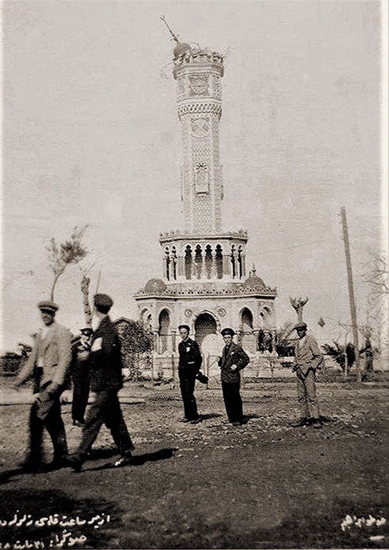
The same earthquake depicted in a photo-postcard which toppled the top part of the Konak clock tower.
